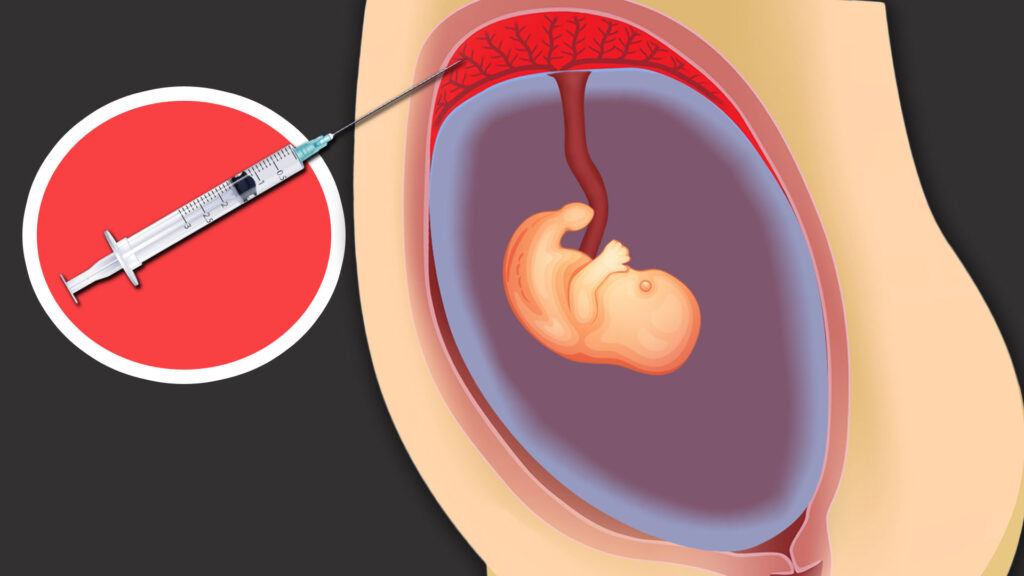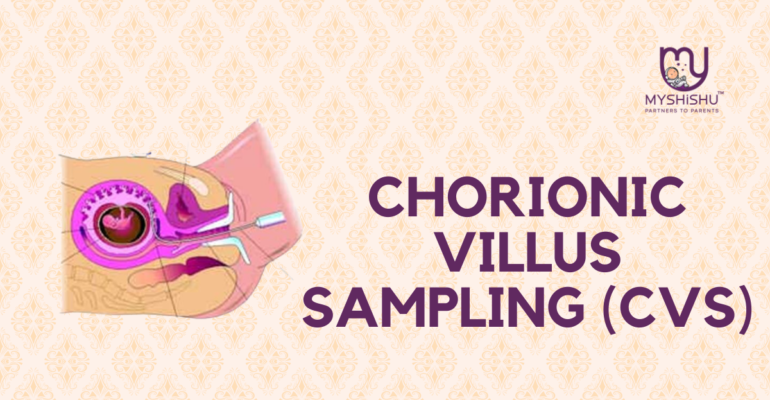Unveiling Chorionic Villus Sampling (CVS): A Comprehensive Guide
Unveiling Chorionic Villus Sampling (CVS): A Comprehensive Guide
Chorionic Villus Sampling (CVS) is a prenatal diagnostic procedure that plays a crucial role in assessing the health and genetic makeup of a developing fetus. For expectant parents navigating the intricate world of pregnancy, understanding the ins and outs of CVS can be both enlightening and empowering. In this comprehensive guide, we will delve into the intricacies of CVS, exploring its purpose, procedure, risks, benefits, and the crucial role it plays in prenatal care.
Introduction:
Chorionic villus sampling (CVS), or chorionic villus biopsy, is a prenatal test that involves taking a sample of tissue from the placenta to test for chromosomal abnormalities and certain other genetic problems. The placenta is a structure in the uterus that provides blood and nutrients from the mother to the fetus,
The chorionic villi are tiny projections of placental tissue that look like fingers and contain the same genetic material as the fetus. Testing may be available for other genetic defects and disorders depending on the family history and availability of lab testing at the time of the procedure.
Understanding Chorionic Villus Sampling (CVS)
- Definition and Purpose: Chorionic Villus Sampling, commonly known as CVS, is a diagnostic test performed during pregnancy to assess the genetic health of the fetus. This procedure involves the extraction of a small sample of placental tissue, known as chorionic villi, for analysis. The primary purpose of CVS is to identify chromosomal abnormalities, genetic disorders, and other potential health issues in the developing fetus.
- When is CVS Recommended? CVS is typically recommended when there is an increased risk of genetic abnormalities based on factors such as maternal age, family history of genetic disorders, or abnormal results from prenatal screening tests. It is commonly performed between the 10th and 13th weeks of pregnancy, providing an early and detailed assessment of the fetus’s health.
There are two types of CVS procedures:
- Transcervical. In this procedure, a catheter is inserted through the cervix into the placenta to obtain the tissue sample
- Transabdominal. In this procedure, a needle is inserted through the abdomen and uterus into the placenta to obtain the tissue sample
Another related procedure that may be used to diagnose genetic and chromosomal defects is amniocentesis.
The CVS Procedure
- Preparing for Chorionic villus sampling (CVS): Before undergoing CVS, expectant parents will have a counseling session with a healthcare provider to discuss the procedure, its potential risks, benefits, and the specific reasons for its recommendation. During this session, questions and concerns can be addressed, and informed consent will be obtained.
- Transcervical and Transabdominal Approaches: There are two primary methods for performing CVS: transcervical and transabdominal. The choice between the two approaches depends on factors such as maternal anatomy, gestational age, and the provider’s expertise.
- Transcervical Chorionic villus sampling (CVS): This approach involves passing a thin tube through the cervix to access the chorionic villi. It is commonly used in the early weeks of pregnancy.
- Transabdominal Chorionic villus sampling (CVS): This method involves inserting a thin needle through the abdominal wall to reach the chorionic villi. It is often preferred in the later weeks of the first trimester.

Reasons for the procedure
Chorionic villus sampling may be used for genetic and chromosome testing in the first trimester of pregnancy . Here are some reasons that a woman might elect to undergo CVS:
- Previously affected child or a family history of a genetic disease, chromosomal abnormalities, or metabolic disorder
- Maternal age over 35 years by the pregnancy due date
- Risk of a sex-linked genetic disease
- Previous ultrasound with questionable or abnormal findings
- Abnormal cell-free DNA test
There may be other reasons for your doctor to recommend a chorionic villus sampling.
Risks and Benefits of Chorionic villus sampling CVS
- Risks Associated with CVS: While Chorionic villus sampling (CVS) is generally a safe procedure, it is not without risks. Potential complications include infection, bleeding, and a small risk of miscarriage. Understanding these risks is essential for expectant parents when making informed decisions about whether to undergo CVS.
- Benefits of CVS: The primary benefit of Chorionic villus sampling (CVS) is its ability to provide early and accurate information about the baby’s genetic health. This allows parents and healthcare providers to make informed decisions regarding the pregnancy, potentially addressing any identified issues or preparing for the challenges associated with a genetic condition.
Before the procedure
- The doctor will explain the procedure to you and offer you the opportunity to ask any questions that you might have about the procedure.
- You will be asked to sign a consent form that gives your permission to do the procedure. Read the form carefully and ask questions if something is not clear.
- Generally, there is no special restriction on diet or activity prior to chorionic villus sampling.
- Tell your doctor if you are sensitive to or are allergic to any medications, latex, iodine, tape, and anesthetic agents (local and general).
- Tell your doctor of all medications (prescribed and over-the-counter) and herbal supplements that you are taking.
- Tell your doctor if you have a history of bleeding disorders or if you are taking any anticoagulant (blood-thinning) medications, aspirin, or any other medications that may affect blood clotting. It may be necessary for you to stop these medications prior to the procedure.
- Tell your doctor if you are Rh negative. During the CVS procedure, blood cells from the mother and fetus can mix. This may lead to Rh sensitization and breaking down of fetal red blood cells. In most cases, prenatal blood tests will have determined whether you are Rh negative. You may be asked to provide these lab results before the procedure.
- You may or may not be asked to have a full bladder right before the procedure. Depending on the position of the uterus and placenta, a full or empty bladder may help move the uterus into a better position for the procedure.
- Based upon your medical condition, your doctor may request other specific preparation.
During the procedure
A CVS procedure may be done on an outpatient basis, or as part of your stay in a hospital. Procedures may vary depending on your condition and your doctor’s practices.
Generally, a CVS procedure follows this process:
- You will be asked to undress completely, or from the waist down, and put on a hospital gown.
- You will be asked to lie down on an exam table and place your hands behind your head.
- Your vital signs (blood pressure, heart rate, and breathing rate) will be checked.
- An ultrasound will be performed to check the fetal heart rate, and the position of the placenta, fetus, and umbilical cord.
- Based on the location of the placenta, the CVS procedure will be performed through your cervix (transcervical) or through your abdominal wall (transabdominal).
For a transcervical CVS procedure:
- The doctor will insert an instrument called a speculum into your vagina so that he or she can see your cervix.
- Your vagina and cervix will be cleansed with an antiseptic solution.
- Using ultrasound guidance, a thin tube will be guided through the cervix to the chorionic villi.
- Cells will be gently suctioned through the tube into a syringe. You may feel a twinge or slight cramping. More than one sample may be needed to obtain enough tissue for testing.
- The tube will then be removed.
For a transabdominal CVS procedure:
- For an abdominal CVS, your abdomen will be cleansed with an antiseptic. You will be instructed not to touch the sterile area on your abdomen during the procedure.
- The doctor may inject a local anesthetic to numb the skin. If a local anesthetic is used, you will feel a needle stick when the anesthetic is injected. This may cause a brief stinging sensation.
- Ultrasound will be used to help guide a long, thin, hollow needle through your abdomen and into the uterus and placenta. This may be slightly painful, and you may feel a cramp as the needle enters the uterus.
- Cells will be gently suctioned into a syringe. More than one sample may be needed to obtain enough tissue for testing.
- The needle will then be removed. An adhesive bandage will be placed over the abdominal needle insertion site.
Conclusion
In conclusion, Chorionic Villus Sampling (CVS) serves as a valuable tool in the realm of prenatal diagnostics, providing crucial insights into the genetic health of the developing fetus. While the decision to undergo CVS involves careful consideration of its potential risks and benefits, its ability to offer early and detailed information can be instrumental in shaping the path of a pregnancy.
It is essential for expectant parents to engage in open communication with healthcare providers, genetic counselors, and support networks to navigate the emotional and medical complexities that may arise during this journey. Ultimately, the knowledge gained from CVS empowers parents with the information needed to make informed decisions and ensure the best possible outcomes for both the baby and the family.
Frequently Asked Questions (FAQs)
-
What is Chorionic Villus Sampling (CVS)?
Chorionic Villus Sampling (CVS) is a prenatal diagnostic procedure performed during pregnancy to assess the genetic health of the fetus. It involves the collection of a small sample of placental tissue (chorionic villi) for genetic analysis.
-
When is CVS typically recommended?
CVS is usually recommended when there is an increased risk of genetic abnormalities, such as advanced maternal age, family history of genetic disorders, or abnormal results from prenatal screening tests.
-
How is CVS performed?
CVS can be performed through two main approaches: transcervical and transabdominal. The method chosen depends on factors like gestational age, maternal anatomy, and the healthcare provider’s expertise.
-
What is the ideal gestational age for CVS?
CVS is typically performed between the 10th and 13th weeks of pregnancy. This timing allows for early detection of chromosomal abnormalities and genetic conditions.
-
Is CVS safe for both the mother and the fetus?
While CVS is generally considered safe, it is not without risks. Potential complications include infection, bleeding, and a small risk of miscarriage. The overall risk is low, and healthcare providers carefully weigh the potential benefits against these risks.
-
How long does the CVS procedure take?
The CVS procedure itself usually takes around 30 minutes, with the actual collection of chorionic villi taking only a few minutes.











